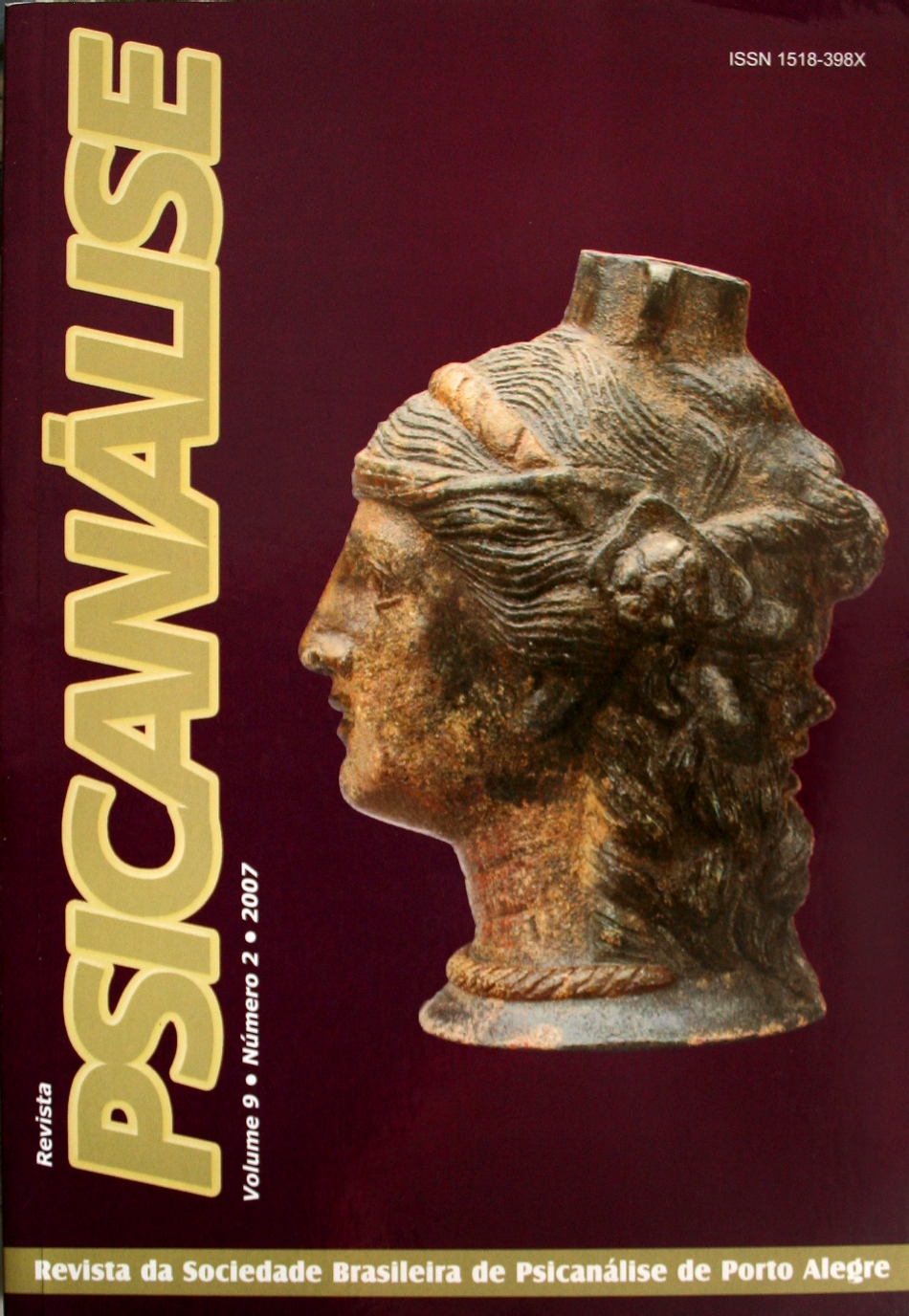To introduce a reflection about “style” on interpretation
DOI:
https://doi.org/10.60106/rsbppa.v9i2.268Keywords:
Interpretative style, Interpretation, Suggestion, Seduction, Hypnosis, Affective SyntonyAbstract
The author asks himself how to speak on a psychoanalytic way about the matter of style of interpretation. The style of interpretation is engaged, in a fundamental way, to the issue of countertransference. Once this is admitted in the analytical process, the psychoanalysts could discuss about what from themselves is implicated in the style of their interpretations. Since S.Freud’s narcissistic economy description in 1920, we can no longer think the interpretation as a simple translation of contents repressed in words. It should assure a function of primary connection, in this manner the structure and the form of the interpretation will pass to the first plan of the reflection. The author highlights that in the current psychoanalytic thought there should be a syntony between the analyst and the possible kind of communication for each patient. Thus, two syntony types are established: a verbal, metaphorical, that operates in the secondary level and another syntony called mime-gesture-postural, characteristic of the primary bond, typical of the precocious interactions, making a connection possible. Working on this level the analyst’s interventions would work as actions or symbolic actions, creators of representations.
Downloads
References
ANZIEU, D. (1974). Le moi-peau. Nouvelle Revue de Psychanalyse, Paris, n. 8.
______ . (1975). Le transfert paradoxal. Nouvelle Revue de Psychanalyse, Paris, n. 12.
DONNET, J. (1983). L’enjeu de l’interprétation. Revue Française de Psychanalyse, n. 5.
FERENCZI, S. (1927-1933). Psychanalyse. Paris: Payot. v. 4.
FREUD, S. (1895). Études sur l’hysterie. Paris: PUF.
______ . (1920). Au-delà du principe du plaisir. In: ______ . Essais de psychanalyse, Paris: Payot.
GREEN, A. (1963). La Psychanalyse devant l’opposition de l’histoire et de la structure. Critique, Paris, n. 194.
______ . (1990). La folie privée. Paris: NRF.
LAPLANCHE, J.; PONTALIS, J. (1963). Fantasmes originaires, fantasmes des origines, origines des fantasmes. Paris: Les Temps Modernes.
ROUSSILLON, R. (1981a). Paradoxe et continuité chez Winnicott. Bulletin de Psychologie, t. 34, n. 350, p. 503-509.
_____. (1985a). La reaction thérapeutique negative: du protiste au jeu de construction. Revue Française de Psychanalyse, n. 2, p. 597-621, 1985.
______. (1985b). Du baquet de Mesmer au “baquet” de S. Freud. Revue Française de Psychanalyse, n. 6, p. 1363-1383, 1985.
______. (1985c). Le medium malleable, la representatiaon de la représentation et la pulsion d’emprise. Revue Belge de Psychanalyse, n. 13, 1989.
______. (1985d). Les paradoxes et la honte d’Oedipe. Actualité Psychiatrique, n. 5, p. 83-92, 1987.
______. (1985e). Négation, négativisme, négativité: lês destins du reste dans la pensée de S. Freud de 1918 à 1923. In.: GUILAUMIN, J. (Dir.). Pouvoir du négatif. Paris: Champ-Vallon, 1988.
______.(1985f). “Le paradoxe de la descructivité” ou l’utilisation de l’objet selon Winnicott. Entrevue, n. 13, p. 72-79, 1987.
______. (1986). Hypnose et contre-transfert sur le cadre psychanalytique chez S. Ferenczi. Bulletin du Groupe lyonnais de Psychanalyse, n. 11, p. 35-68, 1988.
______. (1987a). Carence fantasmatique et activité psychique “seconde peau”. Revue Française de Psychanalyse, n. 2, p. 659-663, 1987.
______ . (1987b). L’hypnose cathartique de J. Breuer et Anna O. Archéologie du cadre de la pratique psychanalytique. (A ser publicado pela PUF).
_______. (1987c). Le pacte dénégatif originaire, le domptage de la pulsion et l’effacement. In: ______ . Figures et modalités du négatif. Paris: Dunod, 1989.
______. (1987d). Le traumatisme perdu. Bulletin de la Société Psychanalytique de Paris, n. 13, p. 27-38, 1987.
______. (1990). L’indécidabilité de l’originaire. In: ______ . Psychanalyse: question pour demain. PUF.
STERN, D. N. (1985). Le monde interpersonnel du nourrisson. Paris: PUF, 1989.
WINNICOTT, D. (1958). Colleted paper: through paediatrics to psychoanalysis. London: Tavistock.
______. (1965). The maturational process and the facelating environnement. London: Hogarth Press.
______. (1971). Jeu et réalité. Paris: Gallimard, 1975. Tradução do inglês por Monod e J.-B Pontalis.
______ . (1974). La crainte de l’effondrement. Nouvelle Revue de Psyhanalyse, Paris, n. 11, p. 35-44.
Downloads
Published
How to Cite
Issue
Section
License
I attribute the copyrights that belong to me, on this work, to SBPdePA, which may use and publish it by the means it deems appropriate, including on the Internet or in any other computer processing.
















